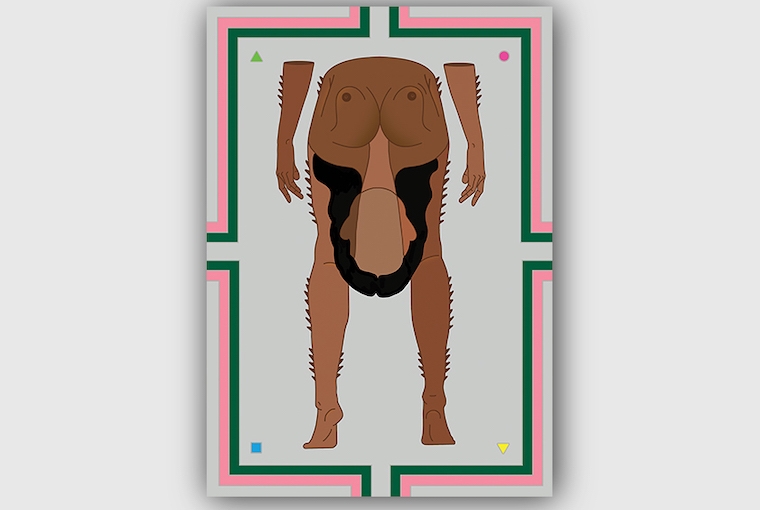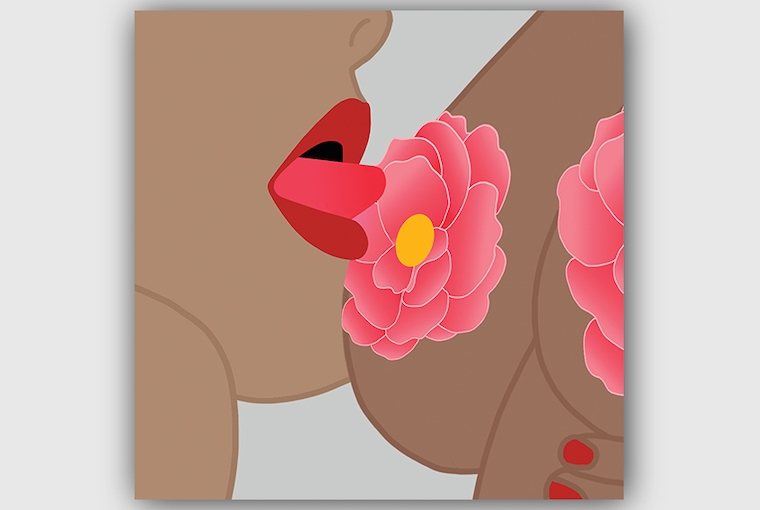

Intrinsic hues of erotic femininity and queer symbolism tinge the work of artist and graphic illustrator, Opashona Ghosh. Born in Calcutta and a graduate of Central St. Martins, University of the Arts, London, Opashona’s world was always visual but her vocabulary of dreams took plenty of detours before it could present itself in a more tangible form — a form that she could understand and share with the world. “A combination of crippling anxiety of a ‘newly graduate’ (back in Autumn 2016), heart full of curiosity and soul full of rage proved to be an excellent catalyst to find the courage to draw perverted lines of dissent without fearing the consequences,” states Opashona, who has thus forged ahead in her love and pursuit of shapes, colours and forms.
Ever since she was young, she was wired to do the exact opposite of what was expected of her. In that constant ebb and flow of acting, reacting, rejecting and being rejected, she found herself in the critical space between the desire to be seen and the desire to completely disappear. As a silent observer of the systemic oppression of patriarchy like most women and queer people face – one foot in misery and the other across a rainbow – dreaming up impossible exit strategies, in the hope of a less brutal reality, propelled her towards creating art. The seductions of fantasy saved her. Her art is “a safe space for the filthiest demands and desires, often asked in the softest of voices, and an exercise in taking up space,” she says. She seeks the illusion of safety and sanity, with as much humour as possible and finds inspiration in the all con- suming challenges and joys of life — all in the pursuit of reclaiming freedom.

In the last few years, Opashona has successfully collaborated with musicians, magazines and fashion labels around the world. She recently put together her second QTBIPOC performance and panel discussion event in Berlin – FEMME NEW WORLD: INTO THE DISSENT – with some of the most inspiring artists, activists and writers she had the opportunity to meet in her many visits to the city. “My collaborations allow me to move out of my automatic comfort zone and push me to think beyond the four walls of my mind. A good collaboration is like a good relationship – tricky at first, but eventually with mutual respect and plenty of commu- nication, it allows for us to bring out the best in all parties involved. The opposite is true too – which comes handy in practicing the subtle art of creating and respecting boundaries – a difficult but necessary lesson in life and art,” she tells me.
Opashona’s art allows better access to conversations that challenge the notions of race, caste, class and patriarchy. Her work is revolutionary and evokes a sense of liberation from the shackles of normative gender and related issues of morality that surround us. The subversion of societal expectations is beautifully empowering as Opashona’s workpushes into spotlight the fluidity of sexuality and the power of female desire and experience. When asked about what this year holds for her, she says, “I just started a parallel adventure in training to be a psychotherapist – something my artistic practice lead me to and a conversa- tion that I am deeply interested in.”
This article was initially published in our June Bookazine.
Text Nidhi Verma
